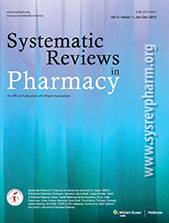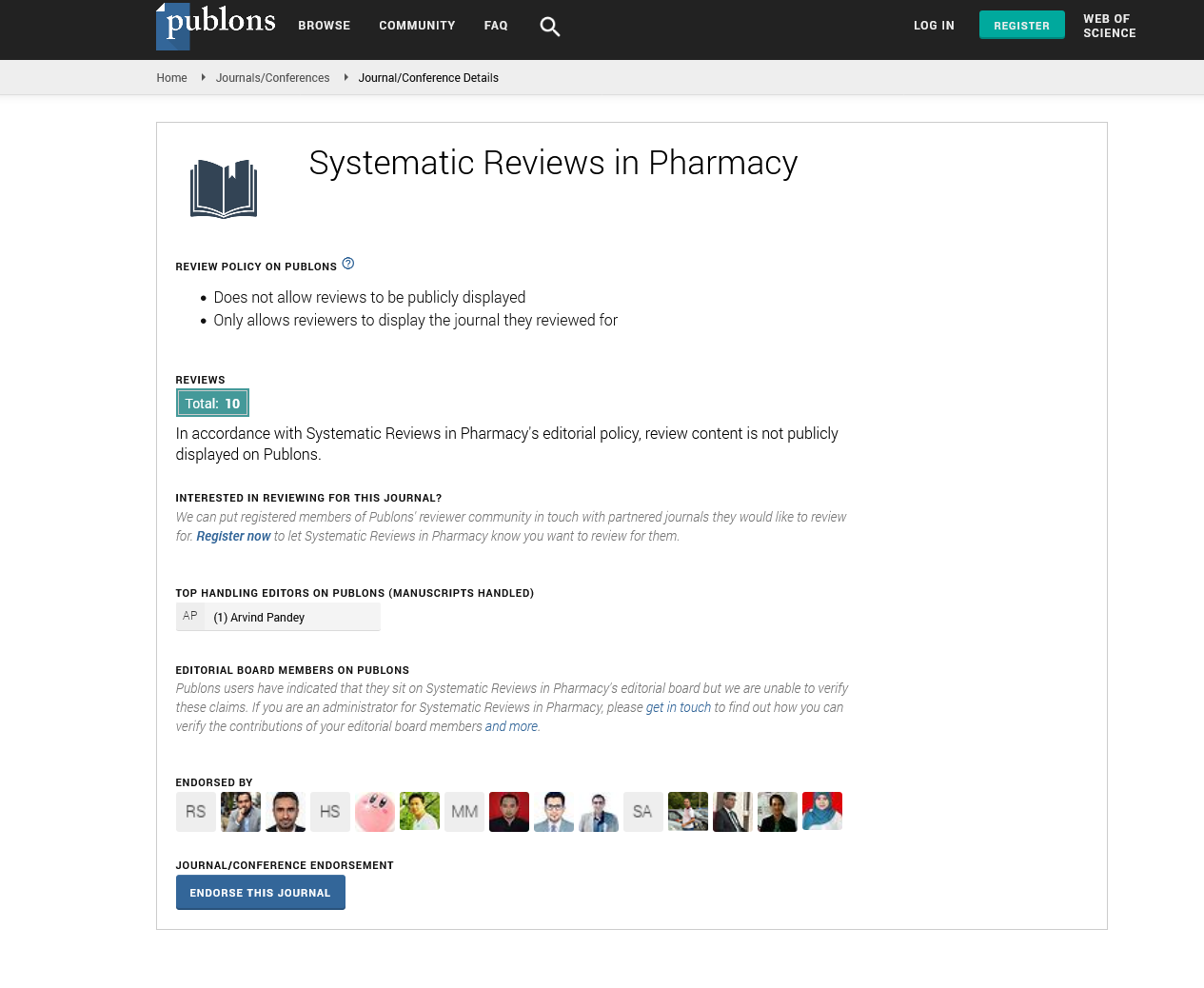Review Article - (2024) Volume 15, Issue 12
Abstract
Cardiac amyloidosis is a rare and often underdiagnosed infiltrative cardiomyopathy characterized by the deposition of misfolded proteins, known as amyloids, within the heart tissue. Symptoms of cardiac amyloidosis often mimic other forms of heart failure and include restrictive cardiomyopathy, arrhythmias and diastolic dysfunction. Diagnosis relies on a combination of echocardiography, cardiac Magnetic Resonance Imaging (MRI), nuclear imaging and tissue biopsy, with the latter being the gold standard.
Treatment strategies vary depending on the type of amyloidosis, ranging from chemotherapy and stem cell transplantation in Amyloid Light-chain (AL) to liver transplantation and novel pharmacologic agents in Hereditary Transthyretin-related Amyloidosis (ATTR). Despite advancements in treatment, the prognosis remains variable and early diagnosis is critical for improving outcomes. Further research into targeted therapies and early detection methods holds promise for better management of this complex disease.
The condition is diagnosed using echocardiograms, cardiac MRI, nuclear imaging and tissue biopsy. Chemotherapy and stem cell transplantation are common treatments for systemic AL amyloidosis patients. However, this aspect of the condition has not gained normative public attention. It is essential to conduct appropriate interventions as early as possible and address these open-ended issues later.
Keywords
Cardiac amyloidosis, Endomyocardial biopsy, Heart failure, Cardiac scintigraphy, Arrhytmias
Introduction
Cardiac amyloidosis is a disease characterized by the build-up of amyloid or abnormal protein deposits in the heart tissues. It is classified among the cardiac infiltrative diseases with poor outcomes and necessitates the exclusion of heart failure, as patients typically present with clinical symptoms. The clinical outcomes depend on the degree of tissue injury and the nature of the amyloid protein involved.
There are several types of amyloidosis, including AL, Secondary Amyloidosis (AA), ATTR, Dialysis-Related Amyloidosis (DRA) and Senile Systemic Amyloidosis (SSA). Among these AL, ATTR and SSA are the types most commonly associated with cardiac involvement, while AA is infrequently implicated in such cases (Shams P and Ahmed I, 2023).
Literature Review
Often, there are no symptoms related to the disease and it may go unrecognized until late stages. The degree of symptomatology is related to the organs involved. In cases of cardiac amyloidosis, symptoms are more pronounced in right ventricular failure.
Patients may experience a variety of tachycardia’s, syncope during exertion especially during ischemia, myocardial infarction and postural hypotension. Apoptosis and fibrosis resulting from the cytotoxic action of amyloid fibrils contribute to systolic dysfunction, leading to symptomatic heart failure characterized by dyspnea and orthopnea (Papingiotis G, et al., 2021).
Upon examination, signs may include raised jugular venous pressure, a right-sided S3 gallop, features suggestive of autonomic neuropathy and in some cases of right heart failure, hepatomegaly and ascites. Extra cardiac manifestations can include bulging of the pupils or areas around the forehead or periorbital region with visible blood vessels. If bilateral, activity in the carpal tunnel may be more indicative of SSA (Figure 1).
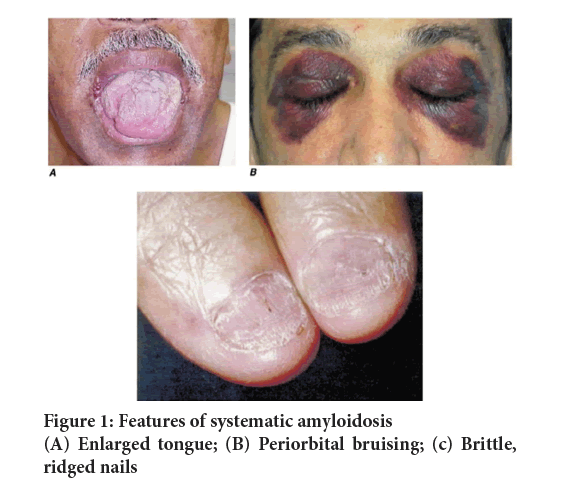
Figure 1: Features of systematic amyloidosis
(A) Enlarged tongue; (B) Periorbital bruising; (c) Brittle,
ridged nails
Patients with nephrotic syndrome or hypoalbuminemia may exhibit significant swelling in the legs that tends to worsen over time. Primary AL amyloidosis consists of monoclonal light chain amyloid proteins, which are usually associated with plasma cell disorders such as multiple myeloma. Cardiac involvement is common in this type and is associated with the poorest prognosis (Table 1).
| Tipping Point (TIP) | Amyloid Light-chain (AL) | Amyloid Transthyretin (ATTR) | Systemic senile amyloidosis (SSA) |
|---|---|---|---|
| Epidemiology | Between 6 and 10 cases per 100,000 people | In African Americans between 3%-4% | 1%-2% of black individuals and about 0.4% of white individuals |
| Age | 60-75 years, >60% of men | Depends on the mutation, mostly >60 years old | Mostly in men >70 years old |
| Protein | Monoclonal light chains | Different in mutations | Wild-type TTR |
| Cardiac features | HFpEF, atrial/ventricular arrhythmias, AV blocks | HFpEF, atrial/ventricular arrhythmias, AV blocks | HFpEF, atrial/ventricular arrhythmias, AV blocks |
| Extracardiac features | Main: Periorbital edema, macroglossia Other: Hepatomecal, Nephrotic syndrome, purpura, carpal tunnel, peripheral polyneuropathy | Hepatomegaly, nephrotic syndrome, purpura, carpal tunnel, peripheral polyneuropathy | Bilateral carpal tunnel syndrome |
| Diagnostic approach | Serum and urine protein electrophoresis, serum free light chain analysis, EMB | Technetium pyrophosphate, genetic test, MEB | Negation of other types, EMB |
| Treatment | HF treatment, chemotherapy, autologous stem cell and heart transplant | HF treatment, chemotherapy, combined liver and kidney surgery, new agents | HF treatment, heart transplantation, new agents |
Table 1: Comparison of clinical features and management approaches for AL, ATTR and SSA
Familial or genetic amyloidosis is linked to mutations in the Transthyretin Amyloidosis (TTR) gene located on the long arm of chromosome 18. More than 120 variants of the TTR gene have been described within the amyloid genic subgroup. This form of the disease typically has a late onset, manifesting after the age of 30-40 years. Extra cardiac manifestations may include polyneuropathy, hepatomegaly, splenomegaly, carpal tunnel syndrome, epidural stenosis, biceps tendon rupture and ocular infiltration (Westermark P, et al., 2003).
SSA, also known as wild-type TTR amyloidosis, is a transport protein produced in the liver. This disease typically occurs in males over the age of seventy.
In addition to cardiac involvement, SSA can affect other lower extremity regions, including the pancreas, brain, kidneys and lungs, as well as causing bilateral carpal tunnel syndrome and lumbar spinal stenosis. The progression of SSA is generally slower than that of AL amyloidosis (Cicco S, et al., 2020).
Diagnosis of SSA is made through an endomyocardial biopsy, particularly when the patient does not fall under AL or ATTR amyloidosis. Patients may experience various forms of tachycardia, syncope during exertion especially during ischemia, myocardial infarction and postural hypotension. Apoptosis and fibrosis resulting from the cytotoxic action of amyloid fibrils contribute to systolic dysfunction, leading to symptomatic heart failure characterized by dyspnea and orthopnea (Vergaro G, et al., 2020).
In laboratory evaluations, the free serum light chain assay measures the ratio of kappa to lambda light chains. The normal range for this ratio is 0.26-1.65. A kappa/lambda ratio greater than 1.65 indicates an excess of kappa light chains, which may suggest a monoclonal gammopathy commonly associated with conditions like AL.
Conversely, a kappa/lambda light chain ratio below 0.26 may indicate an excess of lambda light chains. Elevated levels of B-type Natriuretic Peptide (BNP), Pro B-type Natriuretic Peptide (proBNP), N-Terminal Pro B-type Natriuretic Peptide (NT-proBNP) and troponin serve as predictors of significant cardiac injury before the onset of heart failure. In AL amyloidosis, a BNP level >152 pg/mL is an indicator of an aggressive prognosis. These biomarkers are important for assessing the extent of cardiac damage and guiding treatment strategies.
Electrocardiography findings
In electrocardiography, findings in cardiac amyloidosis may include:
Low Voltage: Small voltage amplitudes <5 mm in the limb leads.
Reduced progression of the R wave: A decrease in the progression of the R wave across the precordial leads, sometimes referred to as a pseudo infarct pattern.
Atrioventricular (AV) block: AV block, which can be partial or complete.
Various arrhythmias: Including atrial fibrillation and other arrhythmias.
Biatrial dilatation: Enlargement of both the left and right atria.
Increased left ventricular wall and valve thickness and echogenicity: Thickening and increased brightness of the left ventricular walls and valves.
Increased right ventricular wall thickness: Thickening of the right ventricular walls.
Speckled Myocardial appearance: A granular or speckled appearance of the myocardium.
Pleural and pericardial Effusion: Fluid accumulation in the pleural and pericardial spaces.
Restrictive diastolic pattern: Restricted filling of the heart during diastole.
A low ejection fraction associated with restrictive dysfunction is a negative prognostic indicator. In amyloidosis, left ventricular systolic function is typically preserved; however, in advanced stages, right ventricular dysfunction may lead to right ventricular dilatation. Strain echocardiography often reveals impaired basal strain and preserved apical strain, with characteristic patterns such as cherry or bull's-eye patterns.
Atypical symptoms of amyloidosis
In amyloidosis, ejection fraction is usually normal but sometimes a reduced ejection fraction may be seen (Donnelly JP and Hanna M, 2017). In this group, despite normal epicardial coronary vessels, patients can present with angina due to systolic dysfunction, chronic myocardial ischemia and small vessel damage.
It would be indistinguishable clinically from hypertrophic cardiomyopathy, with features of septal hypertrophy and left ventricular outflow tract obstruction in a subset of patients, which might require myocardial biopsy for further differentiation. These conditions are quite difficult to distinguish from one another based solely on echocardiography; so differentiation usually requires cardiac MRI with gadolinium contrast.
Other examinations
Cardiac Magnetic Resonance (CMR): Gadolinium accumulation occurs in amyloid tissue.
Cardiac scintigraphy: While all ATTR cases are positive, it is not specific and can also be positive in some AL cases.
Nuclear imaging: Specific radiotracers are used to investigate amyloid deposits. Among these, PET is the most advanced technique compared to other forms of nuclear medicine imaging. PET imaging can effectively depict amyloid deposition in various tissues, including the heart, facilitating the diagnosis of conditions like cardiac amyloidosis.
Endomyocardialbiopsy (EMB) with histopathology remains the gold standard for diagnosis. The sensitivity of EMB for diagnosing amyloidosis is 100%. The biopsy specimen is typically obtained from myocardial tissue; however, samples can also be taken from other affected organs such as abdominal fat, kidney and rectum. Under polarized light microscopy, amyloid fibrils exhibit a characteristic apple-green birefringence when stained with Congo red dye.
Amyloidal arrhythmias
Arrhythmias in amyloidosis occur due to amyloid involvement of the conduction system. These arrhythmias include brady arrhythmias, atrial arrhythmias (most commonly pacing arrhythmias), ventricular arrhythmias, AV block, syncope and sudden cardiac death. Excitable arrhythmias occur in 10%-20% of patients and increase the risk of thromboembolism. There are limitations in rhythm and pulse control for inducible arrhythmias due to the toxic effects of certain medications, such as beta-blockers, calcium channel blockers and digoxin. Amiodarone may be administered, but only in judicious amounts (John RM, 2018).
I Treatment of heart failure
Loop diuretics: Along with fluid and salt restriction; ACE inhibitors, Angiotensin II Receptor Blockers (ARBs) and beta blockers These are contraindicated as they worsen renal function and can cause postural hypotension (Stern LK and Patel J, 2022).
Calcium channel blockers: These are not helpful and worsen left ventricular function
Digoxin: It is not recommended due to high toxicity
Oral anticoagulants: These should be used regardless of CHA2DS2-VASc Score if there is concomitant arrhythmia
Midodrine and compression stockings: May be used for orthostatic hypotension.
II Pacemaker and Implantable Cardioverter-Defibrillators (ICD)
Pacemakers are utilized in cases of symptomatic AV block to help regulate heart rhythm and improve cardiac function. In symptomatic cases, biventricular pacing may be employed to address issues with both ventricles and enhance overall cardiac output (Figure 2).
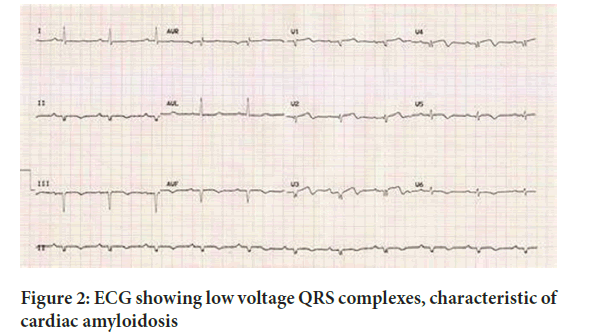
Figure 2: ECG showing low voltage QRS complexes, characteristic of cardiac amyloidosis
The use of ICDs for prophylactic purposes in amyloidosis remains a subject of debate, as it does not always provide additional benefits in preventing sudden cardiac death compared to its associated risks and costs. The decision to implant an ICD is typically based on individual patient risk factors and the presence of specific indications, rather than as a routine preventative measure.
III Heart transplantation
In AL amyloidosis, Orthotopic Heart Transplantation (OHT) is still controversial due to concerns regarding the seeding of the transplanted heart and the progressive nature of the disease. However, patients under the age of 60 without other plasma cell disorders and without significant damage to other major organs are considered ideal candidates for heart transplantation. These patients are less likely to experience complications related to amyloid deposition in the transplanted heart and generally have a better overall prognosis (Palladini G, et al., 2020).
AL specific treatment
Chemotherapy and autologous stem cell transplantation form the cornerstone of treatment for AL amyloidosis, with the goal of reducing the production of light chains. Key treatment options include:
Bortezomib: This protease inhibitor enhances early hematologic response when used alone or in combination with dexamethasone.
Thalidomide: While it improves response to treatment, it is associated with high toxicity.
Elevated levels of NT-proBNP >8500 ng/mL and low blood pressure systolic <100 mmHg are indicators of poor response to chemotherapy and high mortality risk. These markers assist in assessing the severity of cardiac involvement and guide treatment decisions (Figures 3 and 4).
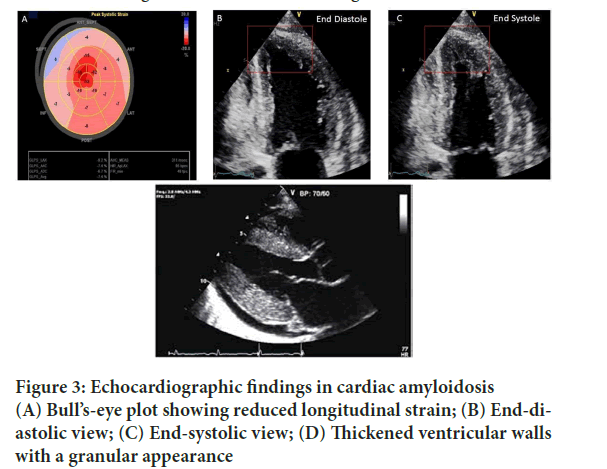
Figure 3: Echocardiographic findings in cardiac amyloidosis (A) Bull’s-eye plot showing reduced longitudinal strain; (B) End-diastolic view; (C) End-systolic view; (D) Thickened ventricular walls with a granular appearance
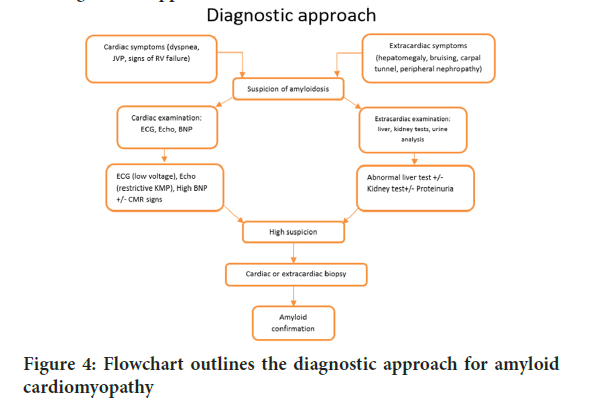
Figure 4: Flowchart outlines the diagnostic approach for amyloid cardiomyopathy
ATTR specific treatment
Since the 1990s, liver transplantation has been performed as a treatment for ATTR amyloidosis due to the synthesis of TTR proteins in the liver. Combined liver and heart transplantation has shown favorable outcomes in selected patients.
Additionally, pharmacological agents such as Tafamidis are used in the treatment of ATTR amyloidosis. Tafamidis stabilizes the TTR protein, preventing it from misfolding and forming amyloid deposits, thereby helping to manage the disease and improve patient outcomes (Wechalekar AD, et al., 2016).
SSA treatment
Symptomatic treatment of heart failure in ATTR amyloidosis is ongoing. Future use of pharmacological agents such as Tafamidis and diflunisal is being explored, as they are currently in the research and development stage. Tafamidis, which is already in use, stabilizes the TTR protein to prevent amyloid formation. Diflunisal, a nonsteroidal anti-inflammatory drug, is also being investigated for its potential to stabilize TTR and improve patient outcomes.
Conclusion
Cardiac amyloidosis is a complex and challenging condition characterized by the accumulation of amyloid proteins in the heart, leading to significant morbidity and mortality. The disease encompasses various types, including AL, ATTR and SSA, each with distinct clinical presentations and treatment strategies. Early recognition and accurate diagnosis are important for effective management, as symptoms often remain subtle until advanced stages. Treatment approaches vary depending on the underlying type of amyloidosis and may include pharmacological agents such as tafamidis for ATTR, chemotherapy for AL and supportive measures for heart failure. Continued research into targeted therapies and improved diagnostic techniques is essential to enhance patient outcomes and quality of life in those affected by this debilitating disease.
References
- Shams P, Ahmed I. Cardiac amyloidosis. Stat Pearls. 2023.
[Google Scholar] [PubMed]
- Papingiotis G, Basmpana L, Farmakis D. Cardiac amyloidosis: Epidemiology, diagnosis and therapy. EJ Cardiol Pract. 2021; 19: 19.
[Crossref] [Google Scholar] [PubMed]
- Westermark P, Bergström J, Solomon A, Murphy C, Sletten K. Transthyretin-derived senile systemic amyloidosis: Clinicopathologic and structural considerations. Amyloid. 2003; 10: 48-54.
[Crossref] [Google Scholar] [PubMed]
- Cicco S, Solimando AG, Buono R, Susca N, Inglese G, Melaccio A, et al. Right heart changes impact on clinical phenotype of amyloid cardiac involvement: A single centre study. Life. 2020; 10(10): 247.
[Crossref] [Google Scholar] [PubMed]
- Vergaro G, Aimo A, Barison A, Genovesi D, Buda G, Passino C, et al. Keys to early diagnosis of cardiac amyloidosis: Red flags from clinical, laboratory and imaging findings. Eur J Prev Cardiol. 2020; 27(17): 1806-1815.
[Crossref] [Google Scholar] [PubMed]
- Donnelly JP, Hanna M. Cardiac amyloidosis: An update on diagnosis and treatment. Cleve Clin J Med. 2017; 84(12): 12-26.
[Crossref] [Google Scholar] [PubMed]
- John RM. Arrhythmias in cardiac amyloidosis. J Innov Card Rhythm Manag. 2018; 9(3): 3051.
[Crossref] [Google Scholar] [PubMed]
- Stern LK, Patel J. Cardiac amyloidosis treatment. Methodist Debakey Cardiovasc J. 2022;18(2): 59.
[Crossref] [Google Scholar] [PubMed]
- Palladini G, Milani P, Merlini G. Management of AL amyloidosis in 2020. Blood. 2020; 136(23): 2620-2627.
[Crossref] [Google Scholar] [PubMed]
- Wechalekar AD, Gillmore JD, Hawkins PN. Systemic amyloidosis. Lancet. 2016; 387(10038): 2641-2654.
[Crossref] [Google Scholar] [PubMed]
Author Info
Gulana Agayeva* and Narmin IslamovaReceived: 03-Dec-2024 Accepted: 23-Dec-2024 Published: 31-Dec-2024, DOI: 10.31858/0975-8453.15.12.369-372
Copyright: This is an open access article distributed under the terms of the Creative Commons Attribution License, which permits unrestricted use, distribution, and reproduction in any medium, provided the original work is properly cited.
ARTICLE TOOLS
- Dental Development between Assisted Reproductive Therapy (Art) and Natural Conceived Children: A Comparative Pilot Study Norzaiti Mohd Kenali, Naimah Hasanah Mohd Fathil, Norbasyirah Bohari, Ahmad Faisal Ismail, Roszaman Ramli SRP. 2020; 11(1): 01-06 » doi: 10.5530/srp.2020.1.01
- Psychometric properties of the World Health Organization Quality of life instrument, short form: Validity in the Vietnamese healthcare context Trung Quang Vo*, Bao Tran Thuy Tran, Ngan Thuy Nguyen, Tram ThiHuyen Nguyen, Thuy Phan Chung Tran SRP. 2020; 11(1): 14-22 » doi: 10.5530/srp.2019.1.3
- A Review of Pharmacoeconomics: the key to “Healthcare for All” Hasamnis AA, Patil SS, Shaik Imam, Narendiran K SRP. 2019; 10(1): s40-s42 » doi: 10.5530/srp.2019.1s.21
- Deuterium Depleted Water as an Adjuvant in Treatment of Cancer Anton Syroeshkin, Olga Levitskaya, Elena Uspenskaya, Tatiana Pleteneva, Daria Romaykina, Daria Ermakova SRP. 2019; 10(1): 112-117 » doi: 10.5530/srp.2019.1.19
- Dental Development between Assisted Reproductive Therapy (Art) and Natural Conceived Children: A Comparative Pilot Study Norzaiti Mohd Kenali, Naimah Hasanah Mohd Fathil, Norbasyirah Bohari, Ahmad Faisal Ismail, Roszaman Ramli SRP. 2020; 11(1): 01-06 » doi: 10.5530/srp.2020.1.01
- Manilkara zapota (L.) Royen Fruit Peel: A Phytochemical and Pharmacological Review Karle Pravin P, Dhawale Shashikant C SRP. 2019; 10(1): 11-14 » doi: 0.5530/srp.2019.1.2
- Pharmacognostic and Phytopharmacological Overview on Bombax ceiba Pankaj Haribhau Chaudhary, Mukund Ganeshrao Tawar SRP. 2019; 10(1): 20-25 » doi: 10.5530/srp.2019.1.4
- A Review of Pharmacoeconomics: the key to “Healthcare for All” Hasamnis AA, Patil SS, Shaik Imam, Narendiran K SRP. 2019; 10(1): s40-s42 » doi: 10.5530/srp.2019.1s.21
- A Prospective Review on Phyto-Pharmacological Aspects of Andrographis paniculata Govindraj Akilandeswari, Arumugam Vijaya Anand, Palanisamy Sampathkumar, Puthamohan Vinayaga Moorthi, Basavaraju Preethi SRP. 2019; 10(1): 15-19 » doi: 10.5530/srp.2019.1.3

